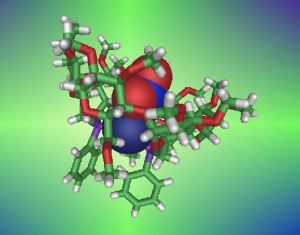Anions and Computers
By T. Neil Davis*
 Evidence seems to be mounting that ion concentrations in the air do affect how people feel. Further, there is evidence that the new trend toward using computerized equipment in offices may be creating a special problem.
Evidence seems to be mounting that ion concentrations in the air do affect how people feel. Further, there is evidence that the new trend toward using computerized equipment in offices may be creating a special problem.
Outdoor air contains about a thousand cations (positive ions) and anions (negative ions) within each cubic centimeter. Cosmic rays coming into the earth from the sun and elsewhere break apart air molecules and thereby create much of the ionization that exists in the air. Since more cosmic rays come in at the high latitudes, the high-latitude air normally has a higher proportion of ionized air molecules or molecular clusters. However, in cities and in confined spaces such as offices, processes take place to reduce the number of anions. One important process is attachment of charge-carrying molecular clusters to pollution particles in the air. When that happens both the ions and the pollution particles tend to be swept out of the air by the electric field that exists naturally near the earth’s surface.
The loss of anions concentration is thought to be harmful because it does seem that high concentrations of anions make people feel better–just why, doesn’t seem to be clearly understood. High anions concentrations also apparently inhibit bacterial growth and perhaps foster plant growth. The good effects seem to be attributed to high concentrations of anions and non otherwise of cations which are harmful to health.
Now, a new problem arises according to an article in the August 1981 issue of Mini-Micro Systems, a publication for computer buffs. The problem has to do with CRTs, the cathode ray tubes contained in video terminals and the newfangled typing stations that seem to be sprouting on desktops all over the country. In the Geophysical Institute alone I counted 70 CRTs, not including cathode ray tubes in test equipment.
The electric field caused by the positive static charge that appears on a CRT in normal operation sweeps the anions from the air and increases the concentration of cations in the same space. Apparently when the concentration of anions is lowered by this or any other means–air conditioning and all electronics does it too–workers complain of headaches, lethargy, dizziness and nausea.
One experiment performed in England on 54 individuals at a computer site seems rather convincing. Anions generators were installed, but, unknown to the persons being tested, the generators were not turned on for four weeks. During that period the anions concentration was about 550 per cubic cm. A secret switching on the generators during the next eight weeks of the test raised the anions concentration to 3,500 per cubic cm, several times that found in normal outside air. After the experimenters turned on the anions generators, they found that the tested persons had fewer headaches and other complaints than before. Only five percent then said they had headaches, whereas 20 percent of the workers complained of headaches before the anions generators were turned on. The number reporting dizziness and nausea dropped by more than half, down to less than one percent.
Other English tests indicate that the more complex the task a person tries, the more the individual is affected by anions levels. Also females are more responsive than males to anions depletion or enrichment.
Fraudulent or questionable claims made some years ago about the benefits of anions generators muddy the issue of how important anions concentrations are in air around workers. Consequently, there now probably will have to be overwhelming evidence that anions levels do affect people before widespread attempts are made to ensure that proper levels are maintained. But if that comes to pass, we may see regulations requiring installation of anions generators in rooms where air conditioning and CRTs are used.
* T. Neil Davis is a seismologist with the Geophysical Institute, University of Alaska Fairbanks.
Note
1. This article (#505) is provided as a public service by the Geophysical Institute, University of Alaska Fairbanks, in cooperation with the UAF research community. T. Neil Davis is a seismologist with the Institute.
Source
1. University of Alaska Fairbanks
![]()
If you are interested in this free, green, lucrative Business Opportunity click here!
Winalite`s Products
Cleaning Products
– Love Moon Anion – Sanitary Napkin
– WinMask
Cosmetic Products
– Healthy Lipstick & Lip Gloss
– V-Shine Spa Aromatherapy Package
– V-SHINE Whitening & Moisturizing Skin Care Series
Wellness Products
– WinGuard
– Win Biowave Energy Waist Belt
Health Food Products
– EnzoFX
– WinCafe
– Health & Care – WinTablets Supplement Facts
![]()
Contact Us Now
frank.usa.winalite@gmail.com – Celular 508 933.4005